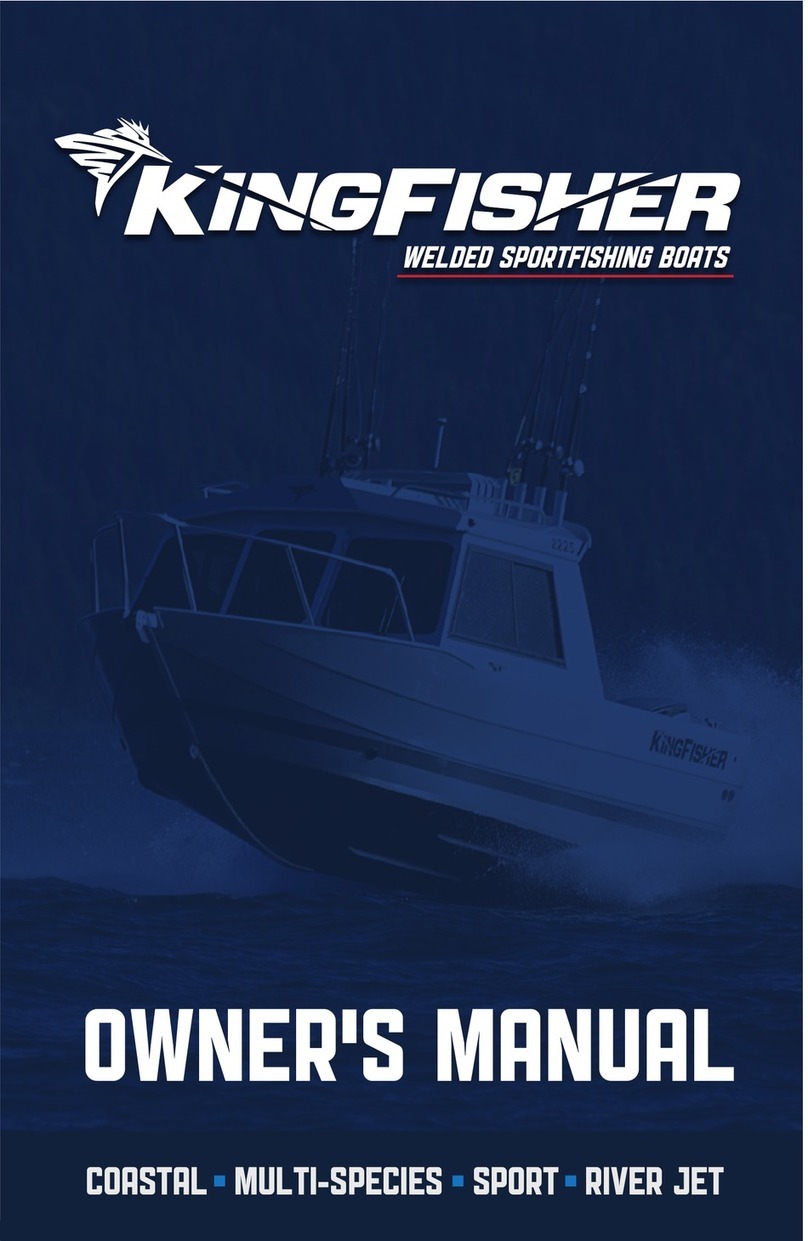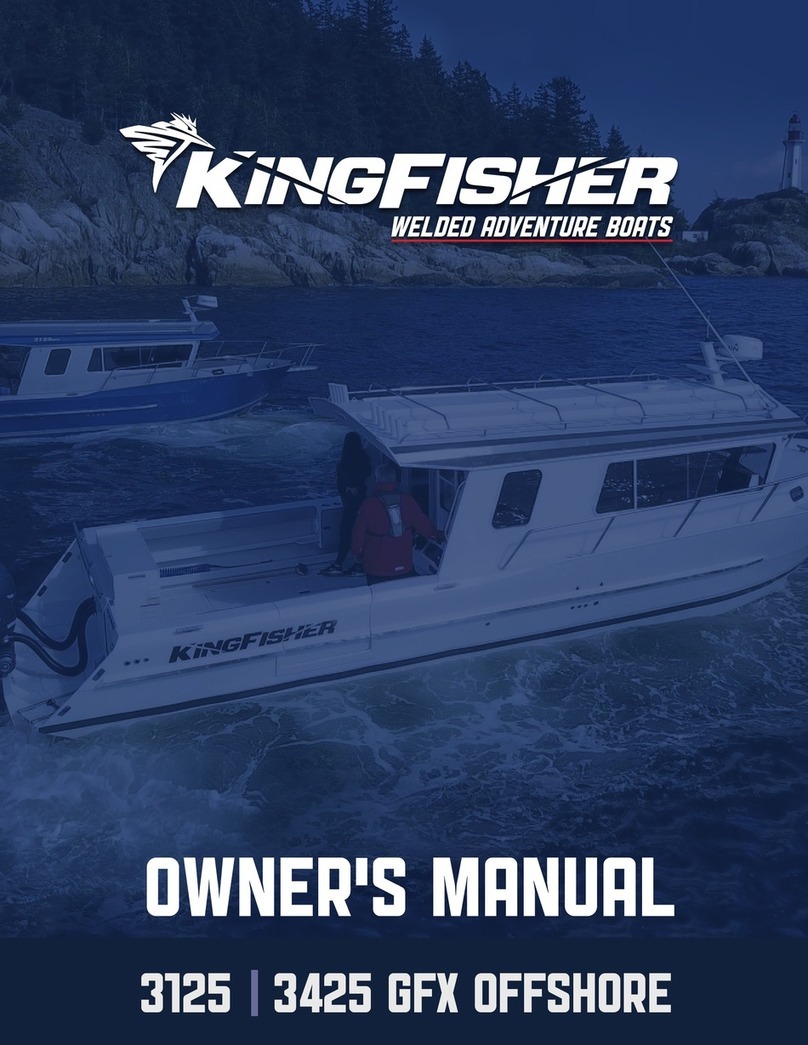
KINGFISHER
O W N E R ’ S M A N U A L
w w w . k i n g f i s h e r b o a t s . c o m
2
SECTION 2 - SAFETY INFORMATION
Pre-trip Safety Checklist
1. Ensure that you are familiar with all applicable boating regulations. These can be
obtained from Transport Canada Office of Boating Safety or your local United States
Coast Guard office.
2. Ensure that your boat insurance and vessel license are complete and up to date
3. Check your on-board safety equipment
-Ensure your boat has paddles on board
-Ensure you have a class 5BC Fire extinguisher in good working condition on board
-Ensure that you boat has a container for bailing
-Ensure you have a watertight flashlight on board in good working condition
-Ensure your vessel has Type A, B, or C flares on board and that they are not expired.
(Vessels less than 6m must carry 3, and vessels over 6m must carry 6)
-Ensure you have a buoyant heaving line on board at least 15m in length
-Ensure the horn works
-Check all lights and make sure they work
-Check your radio, cell phone and or signalling device
-Check your bilge pump
-Ensure every passenger has an approved, properly fitting personal floatation device
4. Check all seats and ensure they are firmly attached
5. Check battery and electrical system for damage or corrosion, and spare fuses
6. Check the steering for smooth operation through the full range of travel
7. Ensure that all loose items are safely and securely stowed
8. Check for any damage to the boat
9. Check that the hull drain plugs are in place
10. Check engine fluid levels
11. Check your capacity rating and ensure your boat is not overloaded or overpowered
12. Check bilge for water, fuel and oil.
13. If your boat is equipped with an inboard motor you must run your blower for 4 minutes
prior to starting the engine.
14. Ensure you have a container to collect any garbage
15. Check the weather report
16. Leave an itinerary of your trip or “Float Plan” with someone on shore and have them
contact local Search and Rescue if you don’t return at the appointed time
17. Always have someone along who can operate the boat if you become incapacitated
18. Make sure you & your guests are wearing approved personal floatation devices
19. Instruct your guests on safety procedures and equipment on board





























